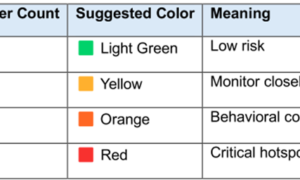Today, artificial intelligence and its branches, have significantly developed in the modern world, offering a number of solutions that were unthinkable a few years ago. One of such emergent technologies is what is known as AI faceswap technology. On the one hand, it can be seen as an avenue for creative exploration and entertainment; on the other, it has deeply troubling ethical implications and egregious invasions of privacy that demand critical analysis.
What is AI Faceswap?
AI face swap technology enables people to switch faces in photographs and videos in a perfect way. A free online faceswapping website can shift faces in a matter of minutes and the users don’t have to sign in. Currently, it has developed the feature of multiple faces swapping and video face swap which can be implemented even by non-technological persons. It is quite interesting to discover that some of the simplest, yet powerful tools are available, yet, the question of ethics and privacy surfaces.
The Popularity of Faceswapping
Due to the growing utilization of the internet and social media, especially using faceswap, Artificial Intelligence is rapidly gaining popularity in today’s society. Faceswap services have became popular and are even represented in application and websites which allows placing the face of a user on celebrities, friends or even cartoon characters. Although this can be quite fun, it is also rather dangerous especially if in the wrong hands it can easily be misused.
Ethical Considerations
Consent and Control
Probably the most significant ethical issue associated with the AI faceswap technology is consent. If you take advantage of someone’s face, it is the definite infringement of their personal rights and freedoms. Despite if this is in jest or with no malicious intent, the face that is utilized may not have given permission or may not enjoy being portrayed that way. Another important principle would be to make sure that all the parties involved have given their consent in every process they are involved with.
Misrepresentation and Identity Theft
The second major area of ethical concern is impersonation and fraud. Superimposition through AI totally makes it possible to produce images and videos of people in settings they have never been. This can cause defamation, harm to ones reputation and sometimes legal ramifications. Occasionally, the faceswapped content is to imitate somebody, commit fraud, or disseminate fake news in the social networking site.
Privacy Concerns
Data Security
Given that facial swap technology is based on Artificial Intelligence processing and that it involves images and videos, there is processing and storage of personal information. Security of the data is also a very important factor to prevent disclosure of users’ information. If these platforms have not put into consideration adequate security measures, then they become vulnerable to hackers and unauthorized penetration thereby producing a compromising position of any user on that platform.
Deepfake Technology
AI faceswap has some difference from deepfake, in which AI is used to produce fake video that looks genuine. Even though faceswapping as a fun activity does not cause any harm using the same technology to provide deepfakes is malicious. Deep fakes have been recently applied for cyber attacks, spreading of fake news, influencing public opinions, and even for blackmail. Generally, the fake videos and their feasibility create skepticism about the content that is available in digital media and present numerous difficulties regarding the protection of privacy and security.
Working on the ethical and Privacy Issues
Implementing Consent Mechanisms
To solve for the ethical issues, consent processes for facingwap AI should be set up to ensure that users have permission from the people in the faces captured. It could entail checklists with which a subject must record consent, or prepopulated consent forms that must be filled before proceeding with faceswap.
Enhancing Data Security
To facilitate faceswap, the following are the key requirements various faceswap platforms should meet; These measures include, encryption of users data, security updates and upgrade and, data anonymization if it will be stored. Also, there should be clarity of data handling of the platforms and user’s ability to control their information.
Educating Users
There is a dire need to sensitize people on the ethical and privacy consequences that accompany facewap AI. People have to be aware of the possible threats and outcomes in the case of improper utilization of the technology. Education could also be used to inspire the appropriate use and make every user respect the other party’s right to privacy and consent.
Legal and Regulatory Measures
The revolving challenges should also be countered by governments and the related bodies regulating the market. The framework also includes activities such as the enactment of laws and or regulations that address acceptable use, legal consequences for improper usage and individuals’ rights. They can contribute towards establishing an environment that accommodates innovation while at the same time observance of due pledges of ethical practices and patient’s privacy.
How Developers and Platforms are Involved
Processing companies, application developers, and social media platforms that promote AI-based faceswap also have a great social and legal obligation to prevent dangerous activity with AI faceswap technology. This includes:
- Developing Ethical Guidelines: Therefore, it is possible to set out certain criteria that, if followed, can reduce the abuse of faceswap technology.
- Monitoring and Moderation: Preventative measures entail ensuring that appropriate monitoring and moderation tools are put in place to settle for undesirable contents. This can range from employing AI in detecting deep fakes or in discovering other forms of the misuse of the technology.
- Providing Transparency: Educating the users of how the technology operates, handling of user data, and the measures that are in place to uphold privacy is perhaps the best way to ensure that the technology is used ethically.
The Future of AI F ace swap
Therefore, it is necessary to find a perfect balance between the advanced and constantly developing ai face swap technology and appropriate ethical concerns. The technology now has the potential to unleash a creative flood in the realm of games and entertainment but it cannot, and must not, be used to harm, or to abridge people’s privacy. So, solving the ethical and privacy issues related to AI faceswap, it is possible to promote the further utilization of this efficient tool, contributing to people’s quality of life.
In conclusion, a technology that is allowing faceswap using AI is an interesting point of connection between artificial intelligence and media. But the ethical issues it brings to the table as well as the privacy issues it triggers cannot be overlooked. Beginning with achieving informed consent and combating misrepresentation up to the promotion of data protection and managing fake media risks, there are many obstacles to be addressed. It is thus important to encourage corporate responsibility and ethical consciousness to realise the positive potential of AI faceswap while protecting people’s liberties and privacy ensurance. If you are a basic user or a developer, it is crucial to familiarize oneself with these points, which will help to comprehend the intricacies that exist upon utilizing AI face swap technology.
FAQs on AI Faceswap: Accessibility, Ethical Issues, and Privacy Issues
- Explaining the AI faceswap technology?
The technique applied in face swapping is well explained by AI as it makes use of artificial intelligence to help swap faces in images and videos without much distortion. It enables somebody to replace one person’s head and neck onto the body of another person, and most of the outcomes are quite realistic, and can be very funny. Free online technology that allows for multi-person face-swapping and video facemorphing can be found in the following platforms:
- How AI faceswap technology works?
AI faceswap technology often involves more or less philosophical deep learning algorithm to paradigm facing. It then proceeds to map the features onto another face and solves for values that make the features seem to belong to the face. The process therefore involves many ‘tricks and features’ in order to make it look as believable as possible.
- What sort of elemental ethical issues are associated with AI faceswap technology?
The main aspects that can be viewed from the ethical perspective are consent, misrepresentation, and identity theft. Identity theft means using some individual’s face without his or her consent, which in turn means infringing on that person’s rights and freedom. Also, they reveal that the AI faceswap can generate materials that are libelous in nature, which is a distortion of the truth and may bring shame to predetermined persons.
- What privacy risks comes with AI faceswap technology?
Potential risks and issues were mostly identified in the area of privacy, meaning both data protection and misuse of deep fakes. Furthermore, the core functionality of AI faceswap platforms is the processing and storage of personal information, which is easily exploitable by hackers for ill intent.

































